Diamonds are a timeless symbol of love, luxury and commitment. They are one of the most sought-after gemstones in the world, and have been adored for centuries. But, not all diamonds are created equal. In fact, there are several different types of diamonds, each with their own unique characteristics and properties. Understanding the differences between these diamond types can make all the difference when it comes to purchasing diamond jewelry. In this ultimate guide, we will explore the different types of diamonds available, including natural diamonds, CVD diamonds, and lab-grown diamonds, to help you make an informed decision when purchasing diamond jewelry. Whether you’re in the market for an engagement ring, wedding band, or simply a beautiful piece of diamond jewelry, this guide will provide you with the knowledge you need to make an informed purchase.
CVD Diamonds
CVD diamonds, also known as synthetic diamonds, are created using a chemical vapor deposition process. In this process, carbon atoms are deposited onto a substrate under high temperatures and pressures, resulting in a diamond structure. CVD diamonds are often used for industrial purposes, such as cutting and drilling, but are also becoming increasingly popular in the jewelry market. They are available in a wide range of colors and are a more affordable option than natural diamonds.
Lab-Grown Diamonds
Lab-grown diamonds, also known as cultured diamonds, are diamonds that are created in a laboratory setting using advanced technology. They are created by replicating the natural diamond-forming process, resulting in a diamond structure that is virtually identical to that of a natural diamond. Lab grown diamonds manufacturer are becoming increasingly popular in the jewelry market, as they are a more sustainable and ethical option than natural diamonds. They are also more affordable, without any compromise on quality and beauty. Lab-grown diamond jewellery is also gaining popularity.
Choosing the Right Diamond
When choosing a diamond, it’s important to consider the 4 C’s: carat weight, cut, color, and clarity. Carat weight refers to the size of the diamond, with one carat equaling 0.2 grams. Cut refers to the diamond’s symmetry, polish, and proportions. Color refers to the diamond’s absence of color, with the highest quality diamonds being completely colorless. Clarity refers to the diamond’s internal and external blemishes and inclusions.
When it comes to choosing between natural, CVD, or lab-grown diamonds, it’s important to consider your personal preferences, budget, and ethical considerations. Natural diamonds are considered the traditional choice and are highly valued for their natural beauty and rarity, but they can be quite expensive. CVD diamonds are a more affordable option, but they are not as durable as natural diamonds. Lab-grown diamonds are a sustainable and ethical choice that is becoming increasingly popular in the jewelry market.
lab grown Diamond Types & Qualities?
Lab-grown diamonds, also known as cultured diamonds, are created using advanced technology in a laboratory setting. They are created by replicating the natural diamond-forming process, resulting in a diamond structure that is virtually identical to that of a natural diamond. There are two main types of lab-grown diamonds: HPHT and CVD. HPHT (high-pressure high-temperature) diamonds are created by mimicking the natural process of diamond formation under high pressure and high temperature conditions. CVD (chemical vapor deposition) diamonds are created by depositing carbon atoms onto a substrate under high temperatures and pressures, resulting in a diamond structure. Both types of lab-grown diamonds are graded according to the same criteria as natural diamonds, using the 4 C’s: carat weight, cut, color, and clarity. They are available in various shapes, sizes, and colors, and are becoming increasingly popular in the jewelry market due to their sustainability and ethical considerations. Lab-grown diamonds are also considered to be more affordable than natural diamonds, without any compromise on quality and beauty. They are also gaining popularity as a lab-grown diamond jewelry. It’s also worth noting that lab-grown diamonds are generally considered as eco-friendly, as they don’t require mining and thus don’t contribute to the destruction of the environment.
Lab-Grown Diamonds: Understanding the Types and Characteristics of CVD and HPHT
There are two main types of lab-grown diamonds : CVD (Chemical Vapor Deposition) and HPHT (High Pressure High Temperature).
CVD diamonds are created by using a chemical process to deposit carbon atoms onto a substrate, which then form into diamond crystals. These diamonds are typically less expensive than natural diamonds and are often used in industrial applications.
HPHT diamonds are created by mimicking the high pressure and high temperature conditions that occur naturally in the Earth’s mantle. These diamonds are typically more expensive than CVD diamonds and are often used in jewelry.
Both types of lab-grown diamonds are physically and chemically identical to natural diamonds, and they are also visually indistinguishable from natural diamonds.
When it comes to lab-grown diamond jewellery, both CVD and HPHT diamonds can be used. The use of lab-grown diamonds in jewelry is becoming increasingly popular because they are more ethically and sustainably sourced than natural diamonds and are often less expensive. They are also beautiful and elegant, and make for great diamond jewellery.
In summary, both types of lab-grown diamonds are physically and chemically identical to natural diamonds, and can be used to create beautiful diamond jewellery. CVD diamonds are typically less expensive and used for industrial applications, while HPHT diamonds are typically more expensive and used for jewellery.
Classifying Diamonds: An Overview of the Different Types and Characteristics
In addition to the different types of lab-grown diamonds, there are also various characteristics that can be used to classify them. These include:
Cut: The cut of a diamond refers to the symmetry, proportion, and finish of the stone. A well-cut diamond will have a good balance of fire, brilliance and scintillation.
Color: Lab-grown diamonds color come in a range of white, yellow, pink, and even blue. The color of a diamond is determined by the presence of impurities or structural defects.
Clarity: Clarity refers to the presence or absence of inclusions and blemishes in a diamond. Lab-grown diamonds can have similar clarity grades as natural diamonds, ranging from flawless to included.
Size: Lab-grown diamonds can come in a range of sizes, from very small to large. The size of a diamond is measured in carats.
By considering the combination of these characteristics, one can classify lab-grown diamonds and differentiate them from natural diamonds.
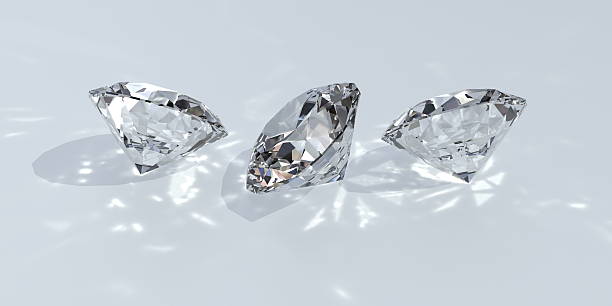
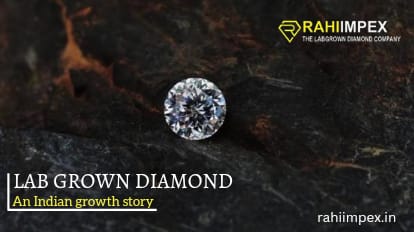
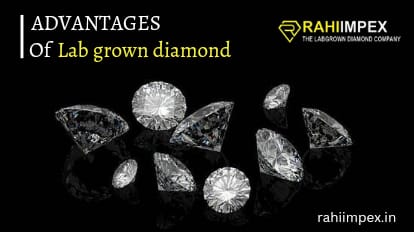

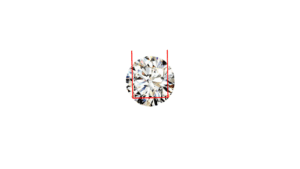
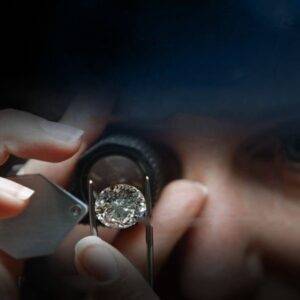
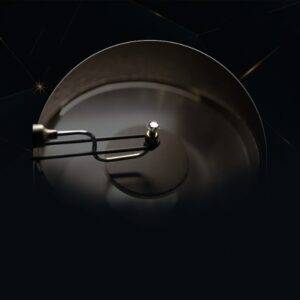
Thanks for sharing. I read many of your blog posts, cool, your blog is very good.
If the fitness center is a temple of the body, I went
from informal worshipper to fanatical zealot. I pushed myself and found I possessed
limits beyond all reckoning. However I Might push myself past the restrict, too – twice
I caught the odor of ozone, saw terrible stars flitting before my eyes, and got
here to sprawled on the health club carpet. I took post-workout naps within the changing room,
spread out on a bench, too exhausted to walk house.
I’ve been capturing my gluteus and whereas it is relatively painless the skin has gone tight and I
Am considering the oil hasn’t quite dissolved. For the sake of the guide, I thought
I Would travel those roads with him.
Jonathan struggled to build muscle for years, regardless of packing in protein and sticking to a rigorous fitness
routine. Suspecting it was low testosterone, he asked his major care physician to test his
ranges yearly. But those exams showed that he was at the
lower finish of the “normal” vary, and his doctor
advised him he was nice. After shedding 20 pounds on his own via rigorous
food regimen and exercise, Benjamin determined to begin out TRT to optimize his
fitness journey.
Different elements which are exterior we are ready to have underneath private
control in a lot of the circumstances. Hormones are
massive communal and well being hazard which may create points on the
long run. In the regular and pure water cycle, these metabolites will get into the consuming water.
Over the time with daily uptake of faucet water, male population is exposed to
female sexual hormones, which have negative affect on male improvement in puberty
and spermatogenesis in reproductive ages. In any case, use of anabolic steroids has direct and adverse influence on spermatogenesis which was proven very lengthy
time in the past.
Steroid-induced muscle positive aspects may be
maintained, however it might take some effort to do so.
It’s essential to proceed with a healthy diet and exercise routine
to maintain up muscle mass and energy. Additionally, some customers might select to make use
of post-cycle remedy (PCT) to help in restoration and retention of muscle
features. In addition to correct vitamin and train, it’s important
to know the potential dangers and unwanted aspect effects of utilizing steroids.
Some of our sufferers have discovered testosterone suspension injections to be painful.
This can be attributed to testosterone suspension requiring an even bigger needle because of it containing bigger, non-micronized crystals.
Typically, we see newbies experiencing as much as
a 20% increase in lifts from an Anavar cycle. Thus, if users
are currently benching 200 pounds, they could probably be lifting 240 after 6 weeks.
We discover this to be attributed to its distribution of
fluid and increased uptake of adenosine triphosphate (ATP) within the
muscle cells. ATP is an vitality molecule that has been shown to extend muscular strength and endurance.
Thus, gymgoers could feel stronger during exercises and be succesful of practice extra
intensely, lifting heavier weights for longer durations.
Now, imagine the impact on somebody endeavoring to grow muscle mass!
Diving into particulars, one might ask, “How does the substance in question operate in the human body? ” Worry not; we’re here to interrupt down the method into easy terms for a better
grasp. As with many anabolic steroids, it
starts by interacting with the body’s cell receptors. The scale makes use of a 5-point Likert scale, where 1 denotes ‘very
important’ and 5 ‘not essential at all’, with values assigned as 1.0,
zero.eight, 0.6, zero.4 and zero.2. The complete rating of the
5 objects signifies the self-management attitude rating
of the affected person. The scale has been examined
with a correlation coefficient of 0.20 and a Cronbach’s alpha (α) value of zero.78, demonstrating wonderful reliability and validity [19].
We can lie solely to ourselves and different folks, however never to nature.
Even the professionals downsize considerably once they cease
taking steroids. You can solely maintain the gains that you just were going to have with or without steroids.
There are two limits on the earth of muscle fiber building – your pure restrict and your steroid restrict.
Of course, even on steroids, the features slow down in some unspecified time in the future because the
organs and the androgen receptors burn out.
We have discovered this opposed impact to be attributed to Deca Durabolin’s low androgenicity, coupled with its reducing of endogenous testosterone production. Dihydrotestosterone (DHT) stimulates
nitric oxide production; therefore, weak androgenic compounds can negatively have an result on blood flow to the penis.
Dianabol, being an oral steroid, will cause liver toxicity; thus, it should not be taken for an extended interval.
Our sufferers often take a liver support supplement similar
to tauroursodeoxycholic acid (TUDCA) to stop alanine aminotransferase (ALT) and aspartate aminotransferase (AST)
enzymes from rising too high. We discover that testosterone in low to reasonable doses causes a
gentle spike in low-density lipoprotein (LDL) cholesterol values,
inflicting an increase in blood strain.
References:
legal anabolics (Candy)
I don’t think the title of your article matches the content lol. Just kidding, mainly because I had some doubts after reading the article.
https://semaglupharm.com/# what is semaglutide
prednisone without prescription 10mg: prednisone in canada – buy prednisone online fast shipping
Rybelsus side effects and dosage SemagluPharm get rybelsus prescription online
CrestorPharm: rosuvastatin and bananas – side effects to rosuvastatin
https://semaglupharm.shop/# SemagluPharm
what is the highest dose of semaglutide for weight loss: SemagluPharm – SemagluPharm
Semaglu Pharm Rybelsus online pharmacy reviews is zepbound a semaglutide
SemagluPharm: Online pharmacy Rybelsus – SemagluPharm
https://lipipharm.shop/# LipiPharm
https://semaglupharm.com/# what happens if you miss a dose of rybelsus
Lipi Pharm: Safe atorvastatin purchase without RX – Safe atorvastatin purchase without RX
LipiPharm does atorvastatin cause dry mouth USA-based pharmacy Lipitor delivery
http://semaglupharm.com/# Semaglu Pharm
Predni Pharm: prednisone 500 mg tablet – Predni Pharm
rosuvastatin drug class Crestor Pharm generic brand for crestor
SemagluPharm: rybelsus patient information – SemagluPharm
http://crestorpharm.com/# ai crestor
https://semaglupharm.com/# when will rybelsus go generic
what is generic for lipitor: USA-based pharmacy Lipitor delivery – Lipi Pharm
lipitor and grapefruit Lipi Pharm LipiPharm
https://semaglupharm.com/# SemagluPharm
how to buy prednisone: where can i get prednisone over the counter – prednisone 10mg tablets
Predni Pharm: PredniPharm – Predni Pharm
https://semaglupharm.shop/# Semaglu Pharm
п»їBuy Crestor without prescription is rosuvastatin bad for kidneys CrestorPharm
CrestorPharm: No doctor visit required statins – rosuvastatin dosing
https://prednipharm.shop/# order prednisone
prednisone cream: Predni Pharm – Predni Pharm
https://semaglupharm.shop/# Semaglu Pharm
No prescription diabetes meds online SemagluPharm Semaglu Pharm
Generic Lipitor fast delivery: will lipitor cause hair loss – Lipi Pharm
Lipi Pharm: LipiPharm – LipiPharm
https://semaglupharm.com/# Rybelsus side effects and dosage
prednisone 10mg buy online PredniPharm can i purchase prednisone without a prescription
LipiPharm: how are p450 drugs involved in the normal pharmacokinetics of drugs like lipitor? – Lipi Pharm
http://lipipharm.com/# Lipi Pharm
rosuvastatin calcium tablets market: Crestor home delivery USA – Crestor Pharm
https://semaglupharm.com/# SemagluPharm
CrestorPharm Crestor Pharm п»їBuy Crestor without prescription
SemagluPharm: Rybelsus online pharmacy reviews – Rybelsus online pharmacy reviews
https://semaglupharm.shop/# Safe delivery in the US
SemagluPharm: FDA-approved Rybelsus alternative – tirzepatide vs semaglutide dosage
Predni Pharm prednisone steroids prednisone 50 mg tablet canada
which is better crestor or lipitor: LipiPharm – generic for lipitor
https://semaglupharm.shop/# Semaglu Pharm
Discreet shipping for Lipitor: why do you take lipitor at night – Lipi Pharm
http://crestorpharm.com/# Buy statins online discreet shipping
rybelsus doses for weight loss rybelsus. Semaglu Pharm
crestor for cholesterol: CrestorPharm – Buy cholesterol medicine online cheap
http://semaglupharm.com/# Semaglu Pharm
SemagluPharm: semaglutide highest dose – No prescription diabetes meds online
Affordable Lipitor alternatives USA Lipi Pharm atorvastatin 40 mg tablets
https://semaglupharm.com/# Semaglu Pharm
prednisone 2 mg daily: prednisone 10 mg daily – Predni Pharm
https://medsfrommexico.com/# Meds From Mexico
India Pharm Global best india pharmacy India Pharm Global
https://canadapharmglobal.shop/# canadian pharmacy 24h com
buying prescription drugs in mexico online: Meds From Mexico – Meds From Mexico
India Pharm Global: indian pharmacy – top 10 pharmacies in india
Meds From Mexico Meds From Mexico buying prescription drugs in mexico online
https://medsfrommexico.com/# Meds From Mexico
India Pharm Global: india pharmacy mail order – buy prescription drugs from india
India Pharm Global: online pharmacy india – Online medicine home delivery
http://canadapharmglobal.com/# northwest pharmacy canada
https://indiapharmglobal.com/# top 10 online pharmacy in india
Meds From Mexico Meds From Mexico Meds From Mexico
canadian family pharmacy: Canada Pharm Global – prescription drugs canada buy online
canadian pharmacy no scripts: Canada Pharm Global – certified canadian international pharmacy
http://canadapharmglobal.com/# safe canadian pharmacy
top online pharmacy india top online pharmacy india India Pharm Global
mexican pharmaceuticals online: Meds From Mexico – Meds From Mexico
safe canadian pharmacy: northern pharmacy canada – canadian pharmacies compare
http://indiapharmglobal.com/# cheapest online pharmacy india
https://indiapharmglobal.com/# India Pharm Global
India Pharm Global indian pharmacy online India Pharm Global
buying prescription drugs in mexico: mexico pharmacies prescription drugs – Meds From Mexico
canadian pharmacy online: is canadian pharmacy legit – canadian world pharmacy
http://indiapharmglobal.com/# India Pharm Global
mexican rx online Meds From Mexico Meds From Mexico
top 10 online pharmacy in india: indian pharmacies safe – India Pharm Global
https://indiapharmglobal.shop/# India Pharm Global
safe canadian pharmacies: legitimate canadian pharmacy online – canadian pharmacy drugs online
https://indiapharmglobal.com/# India Pharm Global
canadian pharmacy no scripts Canada Pharm Global canadian 24 hour pharmacy
certified canadian pharmacy: Canada Pharm Global – online canadian pharmacy reviews
http://indiapharmglobal.com/# indian pharmacies safe
canadian pharmacy ltd: canada discount pharmacy – legitimate canadian online pharmacies
India Pharm Global: India Pharm Global – India Pharm Global
India Pharm Global cheapest online pharmacy india India Pharm Global
https://indiapharmglobal.com/# top 10 pharmacies in india
https://medsfrommexico.shop/# Meds From Mexico
Meds From Mexico: medicine in mexico pharmacies – mexico pharmacies prescription drugs
mexican online pharmacies prescription drugs: Meds From Mexico – mexican online pharmacies prescription drugs
http://medsfrommexico.com/# Meds From Mexico
purple pharmacy mexico price list mexico drug stores pharmacies Meds From Mexico
bactroban parti intime: top farmacia offerte online – amica farmacia ГЁ affidabile
baby apotek Rask Apotek jerntilskudd apotek
https://efarmaciait.com/# crema anticellulite in gravidanza forum
Svenska Pharma: acne patches apotek – Svenska Pharma
https://svenskapharma.com/# saltlösning apotek
avfГёringsmiddel apotek: apotek storsenter – Rask Apotek
https://papafarma.com/# Papa Farma
Svenska Pharma аптека швеция var finns min medicin
se puede comprar mycostatin sin receta: Гіptica alcosa – Papa Farma
nattlysolje apotek: blod i avfГёring test apotek – Rask Apotek
http://raskapotek.com/# Rask Apotek
spotes: saltlГ¶sning piercing apotek – Svenska Pharma
https://papafarma.shop/# Papa Farma
Svenska Pharma Svenska Pharma Svenska Pharma
http://svenskapharma.com/# Svenska Pharma
n95 maske apotek: Rask Apotek – Rask Apotek
Papa Farma Papa Farma remedios 24 opiniones
Rask Apotek: Rask Apotek – armringer barn apotek
http://efarmaciait.com/# e farmacia
http://papafarma.com/# farmasia
Rask Apotek: hansker apotek – Rask Apotek
Svenska Pharma blodtryck kvinna 55 ГҐr fotsvamp bilder
http://svenskapharma.com/# Svenska Pharma
farmacia 24 valencia: Papa Farma – Papa Farma
EFarmaciaIt: EFarmaciaIt – EFarmaciaIt
apotek covidtest Svenska Pharma flatlöss bett bilder
http://svenskapharma.com/# Svenska Pharma
online apotek: Svenska Pharma – Svenska Pharma
http://papafarma.com/# droguerГa cerca de mi abierta
apotek Г¶ppet juldagen: gratis lГ¤kemedel barn – magnesium glycinate apotek
EFarmaciaIt EFarmaciaIt farmaГЁ reclami
https://papafarma.shop/# ozempic 0,50
Svenska Pharma: hГ¤lsporre engelska – aktuella recept
EFarmaciaIt: ted negozio – EFarmaciaIt
pomata travocort crema prezzo bentelan dopo acido ialuronico EFarmaciaIt
http://efarmaciait.com/# EFarmaciaIt
balsoprim niГ±os para que sirve: Papa Farma – farmacia central lugo
https://papafarma.com/# donde comprar cialis de forma segura
cremas natysal opiniones: mycostatin precio sin receta – Papa Farma
Papa Farma Papa Farma Papa Farma
http://papafarma.com/# farmacias por internet
EFarmaciaIt: EFarmaciaIt – EFarmaciaIt
EFarmaciaIt: EFarmaciaIt – bactroban nasale prezzo
Rask Apotek koronatester apotek nebulizer apotek
medicin pГҐ nГ¤tet: handla billigt online – Г¶ppettider apotek
https://papafarma.shop/# mg murcia
omeprazol kapsel: Svenska Pharma – vilka apotek vaccinerar mot tbe?
http://svenskapharma.com/# Svenska Pharma
Rask Apotek Rask Apotek jojobaolje apotek
parafarmacia europa: Papa Farma – contorno ojos avГЁne opiniones
http://efarmaciait.com/# EFarmaciaIt
EFarmaciaIt gentamicina crema parti intime donna EFarmaciaIt
skinnhansker apotek: ibs apotek – Rask Apotek
versandapotheke kostenloser versand: luitpold apotheke berlin – PharmaJetzt
http://pharmajetzt.com/# PharmaJetzt
MedicijnPunt apteka den haag online apotheker
https://medicijnpunt.shop/# recept medicijnen
Pharma Connect USA: online pharmacy in germany – PharmaConnectUSA
Pharma Confiance: Pharma Confiance – Pharma Confiance
Pharma Confiance ggb france pharmacie toulouse ouverte aujourd’hui
http://pharmaconnectusa.com/# best pharmacy prices viagra
MedicijnPunt: Medicijn Punt – apotheke
https://pharmaconnectusa.shop/# Pharma Connect USA
aphoteke online: schop apoteke – Pharma Jetzt
https://pharmaconnectusa.com/# PharmaConnectUSA
percocet pharmacy cost PharmaConnectUSA Pharma Connect USA
Pharma Confiance: Pharma Confiance – achat de viagra
medicijnen online bestellen: Medicijn Punt – MedicijnPunt
https://pharmajetzt.shop/# appotheke online
https://medicijnpunt.com/# recepta online
Medicijn Punt [url=https://medicijnpunt.shop/#]MedicijnPunt[/url] medicijn bestellen
medikamente gГјnstig bestellen: PharmaJetzt – PharmaJetzt
apotheke online shop: online apptheke – Pharma Jetzt
https://pharmajetzt.com/# intenet apotheke
PharmaConnectUSA PharmaConnectUSA cialis online pharmacy usa
pharmacie demain: Pharma Confiance – Pharma Confiance
test allergie chat pharmacie: ph eau cannabis – Pharma Confiance
https://medicijnpunt.shop/# holandia apteka internetowa
http://pharmaconnectusa.com/# best ed medication
Pharma Confiance commander du viagra en toute sГ©curitГ© caudalie que choisir
MedicijnPunt: medicijn bestellen apotheek – MedicijnPunt
online apotheek gratis verzending: MedicijnPunt – Medicijn Punt
http://medicijnpunt.com/# Medicijn Punt
farmacia online: MedicijnPunt – MedicijnPunt
Pharma Confiance Pharma Confiance Pharma Confiance
Pharma Connect USA: online pharmacy flovent inhaler – reputable online pharmacy
https://pharmaconnectusa.shop/# PharmaConnectUSA
motilium pharmacy: PharmaConnectUSA – PharmaConnectUSA
PharmaConnectUSA wedgewood pharmacy naltrexone PharmaConnectUSA
https://pharmajetzt.com/# PharmaJetzt
http://pharmaconfiance.com/# distribution de des hommes et des dieux
Pharma Jetzt: online apo – Pharma Jetzt
Meclizine: Pharma Connect USA – simvastatin at target pharmacy
slinda 4 mg prix pharmacie de garde aujourd’hui nice viagra 50 mg avis
https://pharmaconfiance.shop/# Pharma Confiance
apteka eindhoven: mijn medicijnen bestellen – MedicijnPunt
pharmacy express viagra cialis levitra vpxl: rx online pharmacy – Pharma Connect USA
MedicijnPunt landelijke apotheek apotheken
https://pharmaconnectusa.com/# cost of viagra at pharmacy
https://pharmajetzt.shop/# Pharma Jetzt
medical z catalogue: Pharma Confiance – gff nantes
test dyslexie adulte gratuit en ligne: Pharma Confiance – pure care croquette avis
https://medicijnpunt.com/# Medicijn Punt
Pharma Jetzt sjop apotheke online-apotheke testsieger
ou acheter argel 7: Pharma Confiance – Pharma Confiance
Medicijn Punt: medicijnen apotheek – MedicijnPunt
https://pharmaconfiance.shop/# Pharma Confiance
PharmaConnectUSA Pharma Connect USA Pharma Connect USA
http://pharmaconnectusa.com/# PharmaConnectUSA
can i buy viagra at the pharmacy: the peoples pharmacy – why is zyrtec d behind the pharmacy counter
medicament metronidazole: Pharma Confiance – Pharma Confiance
http://pharmaconnectusa.com/# Pharma Connect USA
schnellste online apotheke mediherz versandapotheke online shop bestellen apotheke internet versandkostenfrei
online apotheke versandkostenfrei: PharmaJetzt – apothekenversand
https://medicijnpunt.com/# medicatie bestellen
medikamente bei: PharmaJetzt – bad apotheke online
online apotheke schnelle lieferung PharmaJetzt PharmaJetzt
grocery store with pharmacy near me: Pharma Connect USA – Pharma Connect USA
https://medicijnpunt.shop/# MedicijnPunt
http://pharmaconfiance.com/# Pharma Confiance
huisapotheek online: online pharmacy – inloggen apotheek
Pharma Confiance livraison mГ©dicament wattrelos Pharma Confiance
https://medicijnpunt.com/# online apotheek zonder recept ervaringen
PharmaConnectUSA: Pharma Connect USA – pharmacy delivery
apotheke niederlande: Medicijn Punt – aptoheek
Medicijn Punt apotheek online bestellen medicijn online bestellen
https://pharmaconnectusa.shop/# medi rx pharmacy
online apotheek zonder recept: Medicijn Punt – Medicijn Punt
Pharma Connect USA: provigil pharmacy online – Pharma Connect USA
https://medicijnpunt.com/# MedicijnPunt
Pharma Connect USA PharmaConnectUSA vardenafil online pharmacy
https://medicijnpunt.com/# MedicijnPunt
apotheek medicijnen bestellen: medicijne – Medicijn Punt
apo med: Pharma Jetzt – pharmacie online
PharmaConnectUSA Amaryl PharmaConnectUSA
https://pharmaconnectusa.com/# Pharma Connect USA
pharmacie grane: pharmacie de lignГ© – viagra sans ordonnance quel pays
PharmaJetzt: medikamente usa online bestellen – PharmaJetzt
http://pharmaconfiance.com/# Pharma Confiance
reduction guigoz pharmacie pres de moi protection gros orteil
http://pharmaconnectusa.com/# Pharma Connect USA
pharmacie de garde aujourd’hui nantes: Pharma Confiance – caudalie sГ©rum anti tache pas cher
PharmaJetzt: gГјnstigste online apotheke – shopapotjeke
Pharma Confiance Pharma Confiance Pharma Confiance
https://medicijnpunt.com/# Medicijn Punt
PharmaConnectUSA: PharmaConnectUSA – Pharma Connect USA
mijn medicijn bestellen: online medicijnen bestellen apotheek – medicijnen kopen met ideal
Pharma Confiance nuxe offre d’emploi Pharma Confiance
https://medicijnpunt.com/# MedicijnPunt
https://pharmaconfiance.com/# pharmacie en ligne viagra avec ordonnance
Pharma Confiance: parapharmacie pas cher – god pour chat
mediceinen: MedicijnPunt – MedicijnPunt
https://medicijnpunt.com/# MedicijnPunt
lipitor 4 copay card pharmacy america pharmacy online rx express pharmacy stockton ca
PharmaConnectUSA: PharmaConnectUSA – american pharmacy
apotheke online bestellen: medikamente kaufen – PharmaJetzt
https://pharmaconfiance.shop/# Pharma Confiance
http://pharmaconfiance.com/# Pharma Confiance
shop-apotheke online: Pharma Jetzt – internet apotheke versandkostenfrei
xl pharmacy cialis sam’s club pharmacy Depo-Medrol
niederlande apotheke: MedicijnPunt – MedicijnPunt
the pharmacie: pharmacie internet – Pharma Confiance
https://pharmajetzt.shop/# medikamente online bestellen
PharmaJetzt: Pharma Jetzt – ihre online apotheke
MedicijnPunt Medicijn Punt MedicijnPunt
get prescription online: Pharma Connect USA – synthroid pharmacy online
https://pharmajetzt.com/# PharmaJetzt
Pharma Confiance: Pharma Confiance – baume des dieux
http://pharmaconnectusa.com/# imiquimod cream online pharmacy
shoop apotheke: apotheke germany – PharmaJetzt
maxalt melt pharmacy: gold rx pharmacy – schedule rx pharmacy one source
versand apotheke auf rechnung Pharma Jetzt Pharma Jetzt
Pharma Confiance: viagra et doliprane – Pharma Confiance
https://medicijnpunt.shop/# netherlands online pharmacy
https://pharmajetzt.shop/# online apptheke
online-apotheken: PharmaJetzt – apotheke im internet
quel est le meilleur site pour acheter du cialis: daflon et foie – Pharma Confiance
mijn apotheek online MedicijnPunt MedicijnPunt
http://pharmaconfiance.com/# flagyl comprimé
welche ist die gГјnstigste online apotheke: pille apotheke – Pharma Jetzt
Pharma Jetzt: online apotheke germany – PharmaJetzt
Medicijn Punt MedicijnPunt medicijnen bestellen zonder recept
https://medicijnpunt.com/# internetapotheek nederland
http://pharmajetzt.com/# apotrke
medicijnen online kopen: apotheke nl – Medicijn Punt
Medicijn Punt: MedicijnPunt – Medicijn Punt
clomiphene citrate online pharmacy: isotretinoin prices pharmacy – online pharmacy priligy
https://pharmaconfiance.com/# Pharma Confiance
online apothee apotheke 24 stunden lieferung onlineapothele
Pharma Jetzt: Pharma Jetzt – online apotheke versand
eu pharmacy viagra: Pharma Confiance – Pharma Confiance
https://pharmaconnectusa.shop/# Pharma Connect USA
http://medicijnpunt.com/# MedicijnPunt
clomid mexico pharmacy: Pharma Connect USA – PharmaConnectUSA
Medicijn Punt medicijnen online kopen apteka nl
PharmaJetzt: versandapotheke vergleich – apotecke
Pharma Jetzt: online apotheke selbitz – PharmaJetzt
http://pharmaconfiance.com/# Pharma Confiance
Pharma Jetzt internet apotheke selbitz apotheken online
PharmaConnectUSA: PharmaConnectUSA – online pharmacy with doctor consultation
MedicijnPunt: apotheek nederland – apotheek medicijnen bestellen
http://pharmajetzt.com/# aporheke
https://pharmajetzt.shop/# günstige apotheke
apotheek producten: MedicijnPunt – mijn medicijnen bestellen
MedicijnPunt: Medicijn Punt – apotheke online
Pharma Connect USA Aricept online pharmacy no prescription needed lortab
bupropion pharmacy prices: pharmacy viagra online – Pharma Connect USA
https://medicijnpunt.shop/# MedicijnPunt
PharmaConnectUSA: Pharma Connect USA – pharmacies shipping to usa
https://canrxdirect.shop/# drugs from canada
canadian drugs pharmacy canada pharmacy online cross border pharmacy canada
IndiMeds Direct: reputable indian online pharmacy – indian pharmacy paypal
https://canrxdirect.com/# best canadian online pharmacy
reputable indian online pharmacy: cheapest online pharmacy india – IndiMeds Direct
canadian pharmacy online: canadian drug pharmacy – canadian pharmacy
https://canrxdirect.shop/# canada pharmacy reviews
buying prescription drugs in mexico online buying prescription drugs in mexico online mexico drug stores pharmacies
п»їbest mexican online pharmacies: medication from mexico pharmacy – mexican drugstore online
http://canrxdirect.com/# best rated canadian pharmacy
cheapest online pharmacy india: india pharmacy – indian pharmacy
http://canrxdirect.com/# vipps canadian pharmacy
medicine in mexico pharmacies mexican online pharmacies prescription drugs TijuanaMeds
top 10 online pharmacy in india: IndiMeds Direct – best india pharmacy
canadian king pharmacy CanRx Direct canada drugs online review
http://indimedsdirect.com/# IndiMeds Direct
https://tijuanameds.com/# mexican online pharmacies prescription drugs
IndiMeds Direct: indian pharmacy – indian pharmacy online
canadian pharmacy 365 legal to buy prescription drugs from canada canadian pharmacy 24h com
https://tijuanameds.com/# best mexican online pharmacies
my canadian pharmacy reviews: canadian pharmacies online – pet meds without vet prescription canada
IndiMeds Direct IndiMeds Direct indian pharmacy
http://tijuanameds.com/# TijuanaMeds
mexican mail order pharmacies: best online pharmacies in mexico – mexico drug stores pharmacies
top online pharmacy india: online pharmacy india – IndiMeds Direct
https://indimedsdirect.shop/# IndiMeds Direct
TijuanaMeds pharmacies in mexico that ship to usa mexican pharmaceuticals online
https://tijuanameds.com/# TijuanaMeds
safe reliable canadian pharmacy: CanRx Direct – canadian drug pharmacy
TijuanaMeds: TijuanaMeds – TijuanaMeds
TijuanaMeds TijuanaMeds TijuanaMeds
http://indimedsdirect.com/# IndiMeds Direct
buy enclomiphene online: enclomiphene price – enclomiphene testosterone
RxFree Meds: us pharmacy ambien no prescription – RxFree Meds
http://farmaciaasequible.com/# pomada diprogenta precio
http://farmaciaasequible.com/# Farmacia Asequible
Farmacia Asequible farmacia online sevilla Farmacia Asequible
Farmacia Asequible: farmacias en sevilla la nueva – parafarmacia y farmacia
enclomiphene price: enclomiphene for sale – enclomiphene citrate
https://farmaciaasequible.com/# melatonina 2 mg farmacia
RxFree Meds: muscle relaxant – legit online pharmacy klonopin
enclomiphene for men buy enclomiphene online enclomiphene for sale
Farmacia Asequible: tramadol precio – Farmacia Asequible
https://enclomiphenebestprice.shop/# enclomiphene buy
https://farmaciaasequible.shop/# Farmacia Asequible
farmacias direct opiniones: reseГ±as mg – farmacia de espaГ±a
world best pharmacy online store reviews RxFree Meds lexapro pharmacy price
enclomiphene online: enclomiphene citrate – buy enclomiphene online
enclomiphene citrate: enclomiphene for sale – enclomiphene for sale
online pharmacy reviews propecia RxFree Meds RxFree Meds
https://rxfreemeds.shop/# RxFree Meds